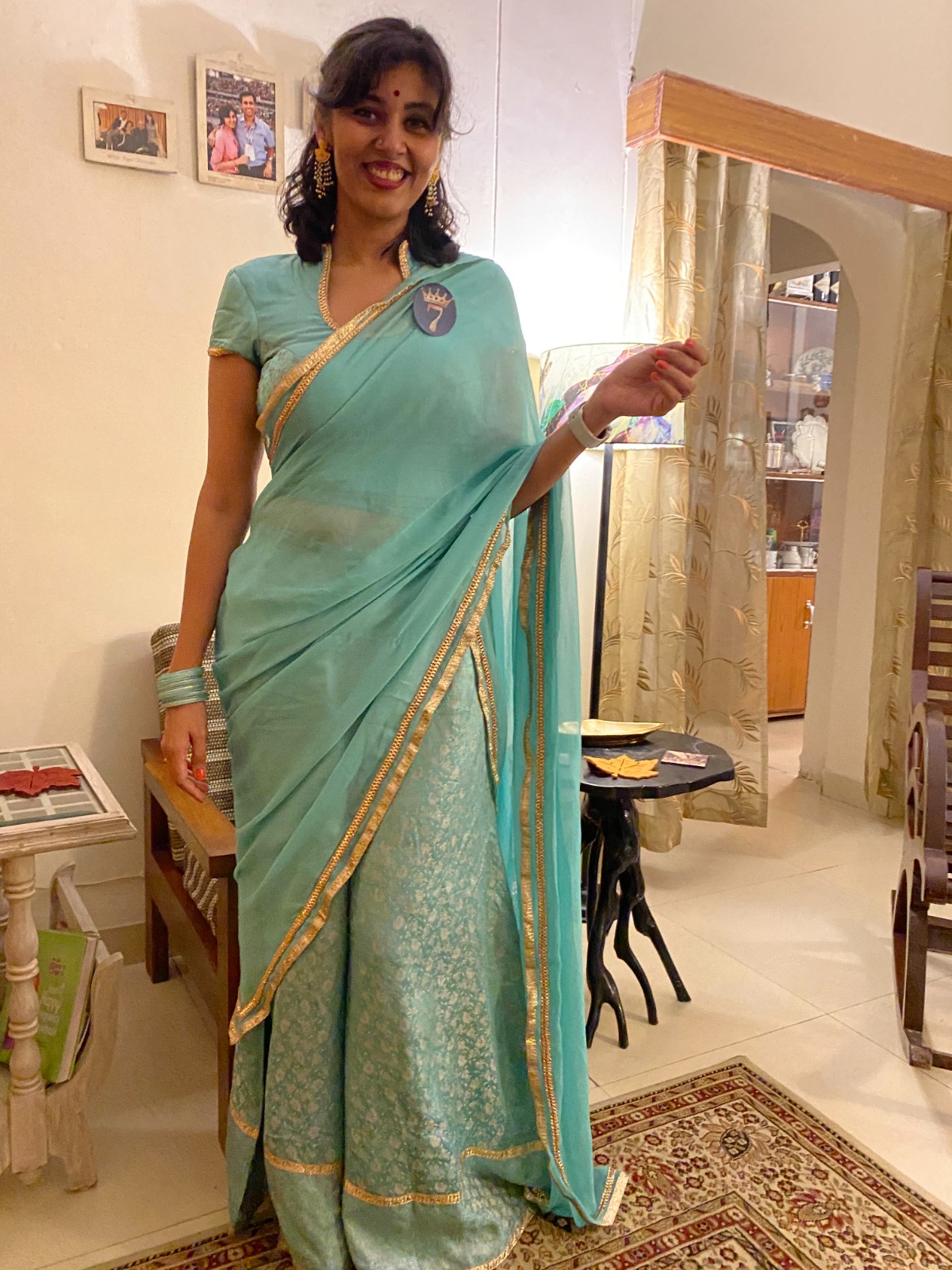Some saris are more than just a garment. They are a sentiment. Even more so when they hold not just your own memories but also those of your loved ones. I’ve been rather fortunate to have inherited some very special saris. From family and friends. But the biggest challenge I face when it comes to many of these saris is their age. And with age, come frayed edges, cuts, stains and even weakened fabric. Too damaged to wear, too dear to discard! Here are a few things I’ve done to restore my old saris to glory, one way or another…
Revive the fabric


This Benarasi tissue was my mother’s reception sari. Well-loved and well-worn. Now batting at 41-years-old, it had begun to show multiple signs of ageing, including, stains, cuts and frayed edges. When I wore it for Diwali, last year, I had to drape it such that the damages were well-concealed. But I was scared this would be the end of the sari. Now, this was not a sari I wanted to upcycle or change the form of. I wanted this sari to stay a sari. And so, I reached out to the good folks at Rang Riwaaz. Their experienced kaarigars have restored the damaged portions, and to prevent further damage, they have reinforced the fabric with a backing. The Gurgaon-based studio also offers transposition of embroidery, borders and zari work from a damaged sari body on to a new one.
Embroider over damaged areas


My mum bought this plain georgette sari for their 25th anniversary. This was one of her favourite saris for about 5 years, till I decided to borrow it for a party—and rip it! Right before her eyes. By the time we got home, the sari was mine and the rip was my headache. I got it darned, but it was a little too visible. So Pooja Bhagat suggested I get these little paisley bootis embroidered on it. The talented kaarigars did such an excellent job, I can no longer find the rip.
Repurpose as home décor


This upholstery was once a sari, as was this pelmet cover. It belonged to my grandmother, but it had a very visible stain, because of which I wasn’t being able to wear it like I would like to. So I figured, what better way to always have it in sight, than to use it as a seat cover for a sofa that also belonged to my grandparents! So I used the border to make pelmet covers, the pallu to make cushion covers and the rest of the sari to make the seat covers. Better than any fabric I could’ve got at a store!
Upcycle into a statement garment


Two distinct Benarasi silks… One upcycled into a sharara and one into a pant-suit. The former is from my mother’s wedding trousseau, and had many stains all over it. So I got it made into a stylish sharara-choli set, for my brother’s wedding. The latter is from my own wedding trousseau, but the fabric was not very strong and had started to sag with the weight of the border. So I used the border as panels on the back and for the sleeve, so got it upcycled into this stylish pant-suit I could wear to multiple occasions.
Most boutiques offer upcycling services, but if you’re looking for something truly distinct, Doodlage and LataSita specialise in upcycling heirloom saris into statement pieces.






